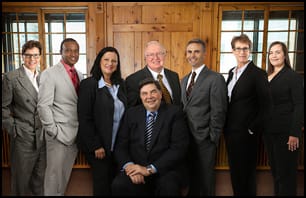Tom Marshall quoted on his case, Wise v. Stonebridge, in Minnesota Lawyer
Court revives trip and fall suit by tenant
By: Barbara L. Jones May 3, 2019
A tenant who is injured in a fall on a sidewalk in a common area of a senior apartment community may sue the landlord under common law but not under the statutory covenants of habitability, the Court of Appeals ruled recently in Wise at al. v. Stonebridge Communities LLC.
The statute does not support a negligence action for breach of the duty to repair and maintain the common areas of the leased premises, the court said in an opinion written by Judge Peter Reyes.
The court affirmed a summary judgment under the habitability statute, Minn. Stat. § 504B.161, subd. 1(a) but reversed and allowed the case to continue based on a common-law duty to repair and maintain common areas. It also reversed a summary judgment for the landlord on the duty to warn where the nature of the uneven sidewalk arguably eliminated Stonebridge’s duty to warn the Wises of its existence.
“This court has repeatedly held that the remedies applied by the supreme court to enforce the covenants of habitability ‘do not appear to extend liability of a landlord to money damages for injuries received by a tenant as a result of an unknown defect in the rented premises,'” the court said.
Thomas Marshall, the attorney for the plaintiffs, said that the question of the statutory covenants came into the case because the defendant was arguing that it had no duty at all. That is not true because it is unwaivable under the statute, he said. “The complaint sounded in negligence,” he said.
It can be very difficult for plaintiffs to prevail in slip and fall cases. Marshall said, “Don’t give up on a case. I thought we had a pretty solid claim.” The landlord was aware to the uneven sidewalk, Marshall said. “They watched it grow.”
Uneven sidewalk
Barbara Wise tripped and fell on an uneven section of the sidewalk in front of the entrance to the senior community. Wise claimed that she tripped on both the uneven sidewalk and a black mat on the sidewalk, but the precise location of the mat is disputed. As a result of her fall, Wise suffered a bloody nose, concussion, torn right bicep tendon, severe bruising, and an aggravation of a prior rotator-cuff repair to her right arm. She claimed resulting pain, headaches, vision problems, and insomnia.
Statutory covenants
The statutory covenants of habitability are implied in every residential lease and provide that common areas will be fit for the tenant’s use and the property will be repaired and maintained according to applicable health and safety laws.
But the Court of Appeals reminded lawyers and landlords that the Supreme Court has not approved the cause of action proposed by the plaintiffs.
In contrast, “The supreme court has authorized enforcement of the covenants of habitability in three specific ways: (1) The tenant may assert breach of the covenants as a defense to the landlord’s unlawful detainer action for nonpayment of rent; (2) The tenant may continue to pay rent and bring his own action to recover damages for breach of the covenants by the landlord; (3) The tenant, after vacating the premises and suspending rent payments, may raise breach of the covenants as a defense to an action by the landlord for rent.”
The Court of Appeals declined to recognize a new statutory negligence cause of action, saying that was not the function of the court.
Failure to correct
But the case goes on under common-law negligence theories because the plaintiffs argue that the defendant failed to correct the uneven sidewalk that caused Barbara to fall.
Generally Minnesota follows the common-law rule that landlords are generally not liable and have no duty of care to tenants for damages caused by defective conditions on the premises. But there are exceptions to that rule, including where the landlord retains possession and control over common areas.
The common-area exception applies here, said the court, and the duty requires “the landlord to inspect the condition of the common area at reasonable intervals, and not to wait until someone has injured themselves as a result of a dangerous condition that a reasonable inspection would have revealed.”
Here, the record indicated that the landlord had actual knowledge at least two months before the fall and the Wises’ daughter testified that she noticed the hazardous condition in the six months before Barbara’s fall.
This raised a fact issue that made summary judgment inappropriate, the court said.
Failure to warn
The defendant also argued that the uneven sidewalk constituted an open-and obvious condition, for which he did not owe the plaintiffs a duty to warn. The plaintiffs argued that the landlord’s duty to repair and maintain the common areas superseded any open-and-obvious determination.
The Court of Appeals reversed summary judgment on this issue as well, the court said. “While the Wises’ argument about the open-and-obvious exception fails based solely on Wise’s testimony, we conclude that the district court erred by failing to resolve any doubts or factual inconsistencies in favor of the Wises, as the nonmoving parties,” the court said.
The record contains inconsistent testimony about the extent to which the mat may have concealed the uneven sidewalk, the Court of Appeals said. The Wises’ challenge to the objective standard of the open-and-obvious determination failed but the inconsistencies surrounding the exact placement of the mat should have been resolved in their favor as the nonmoving parties, and precluded summary judgment, the court said.

